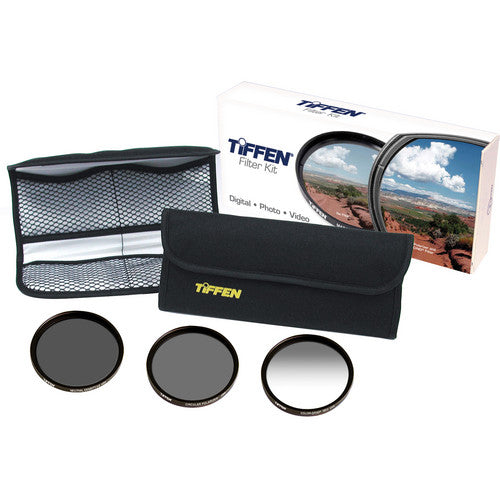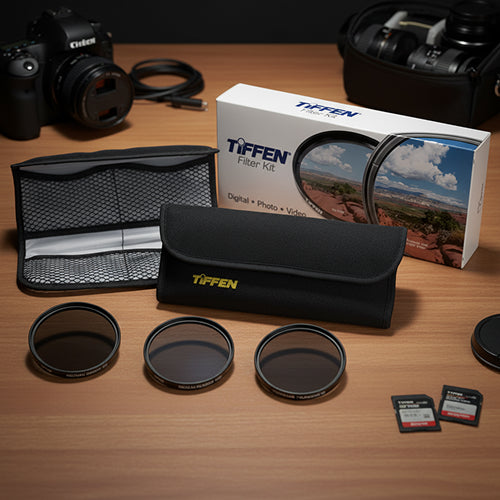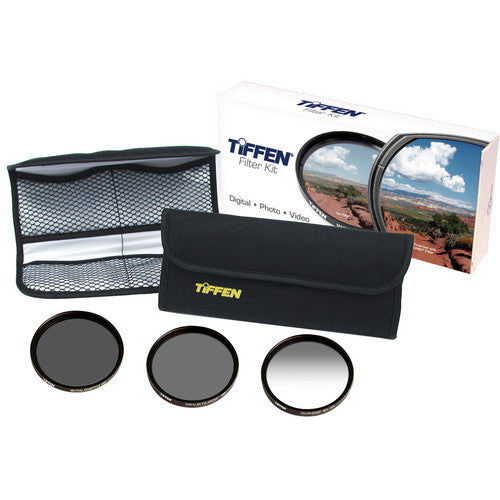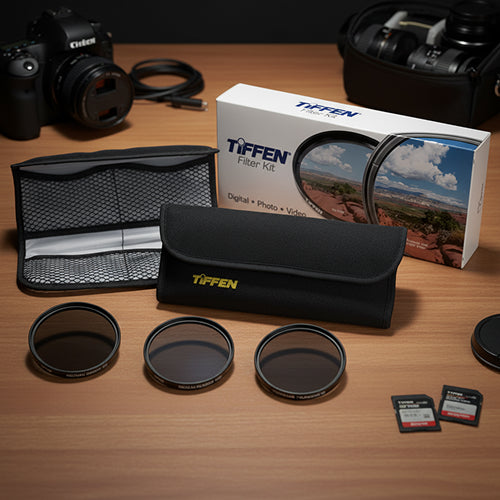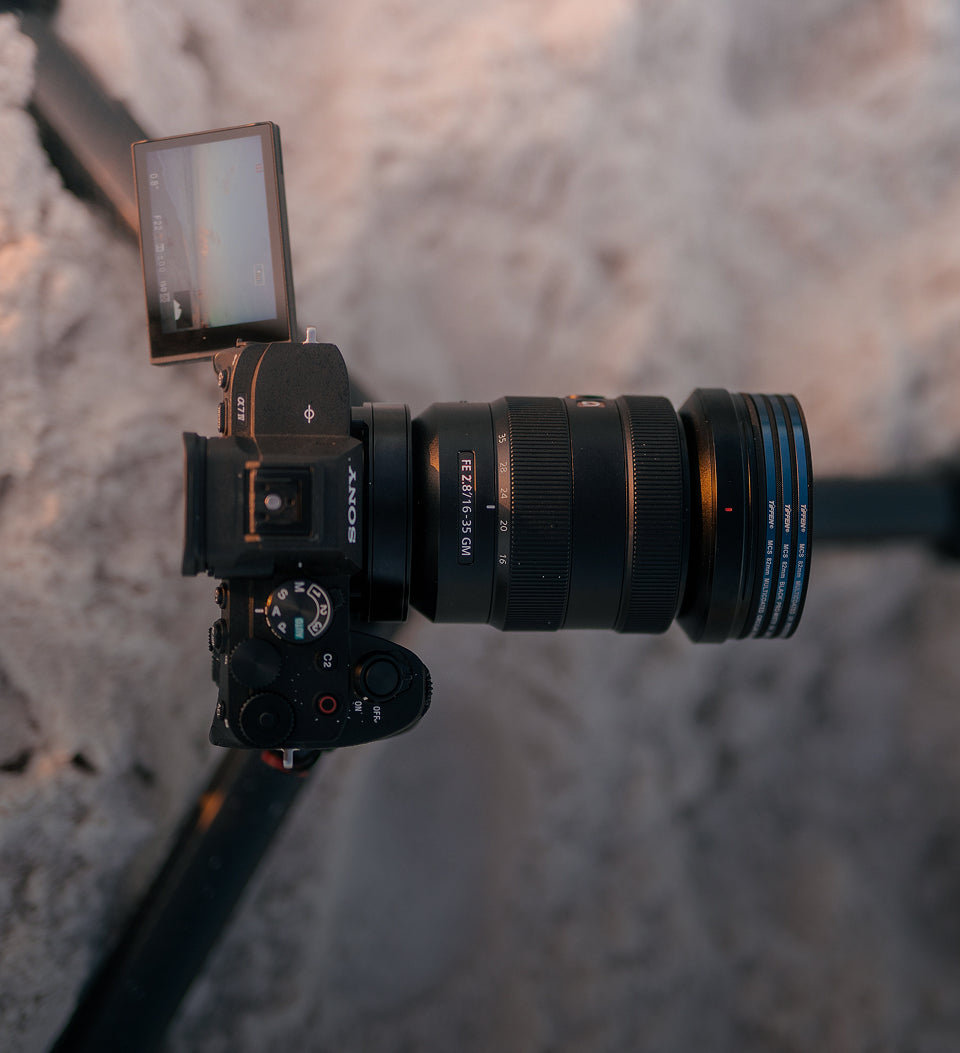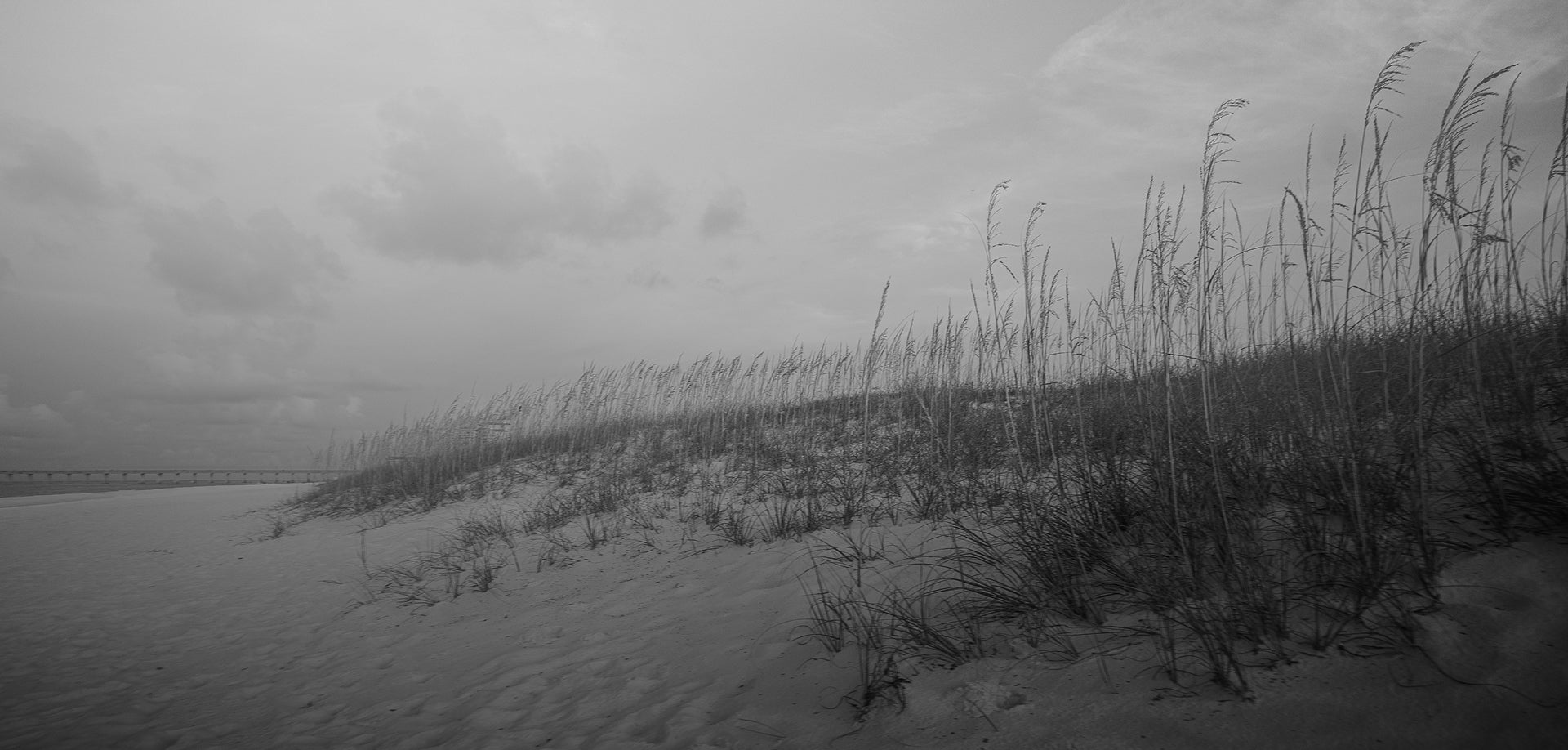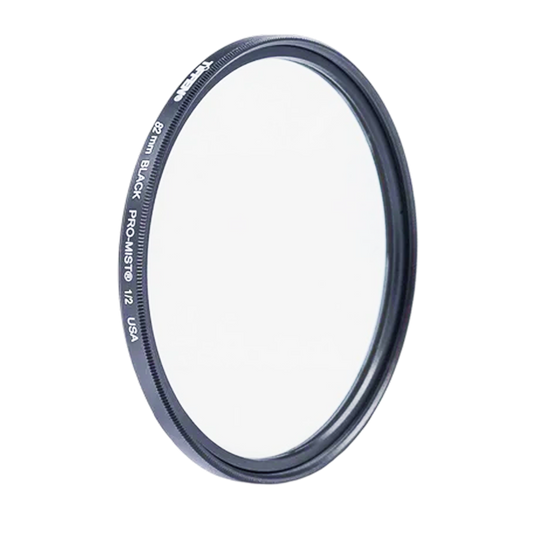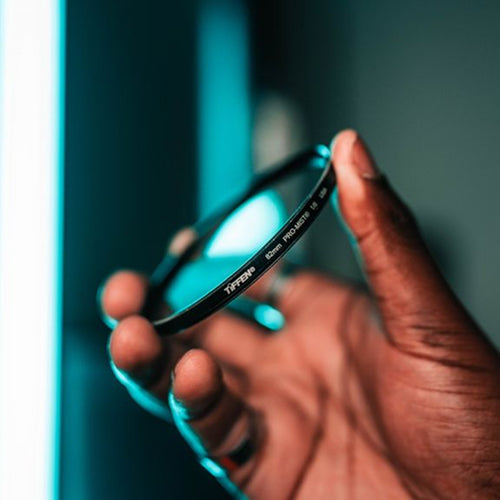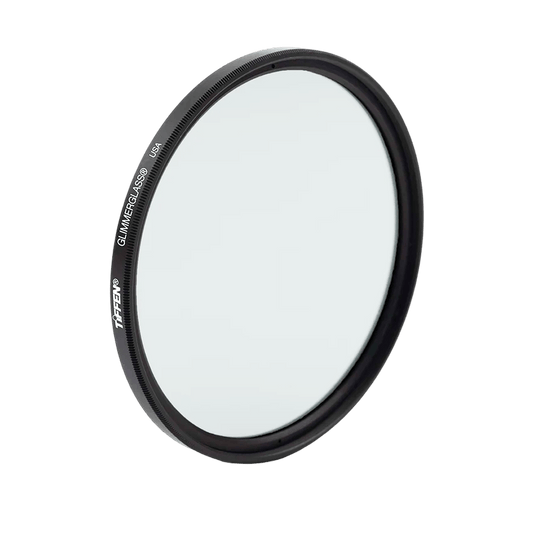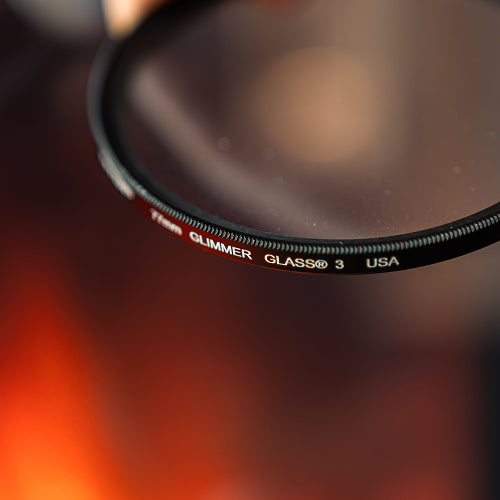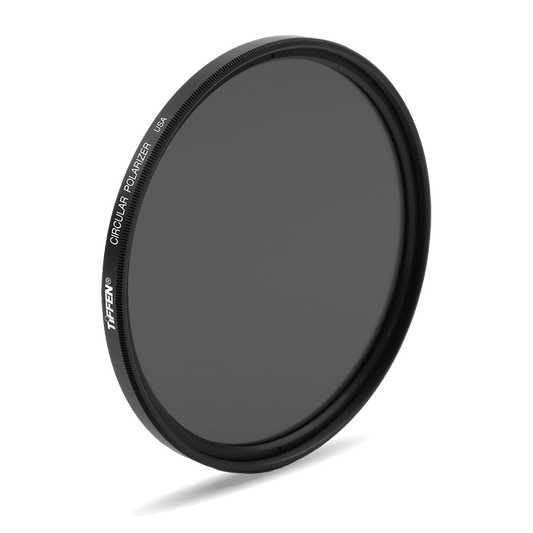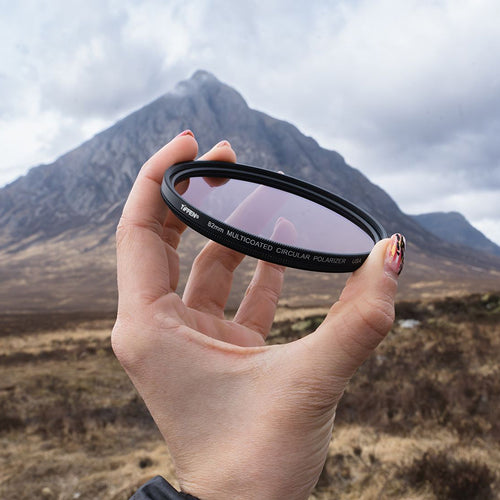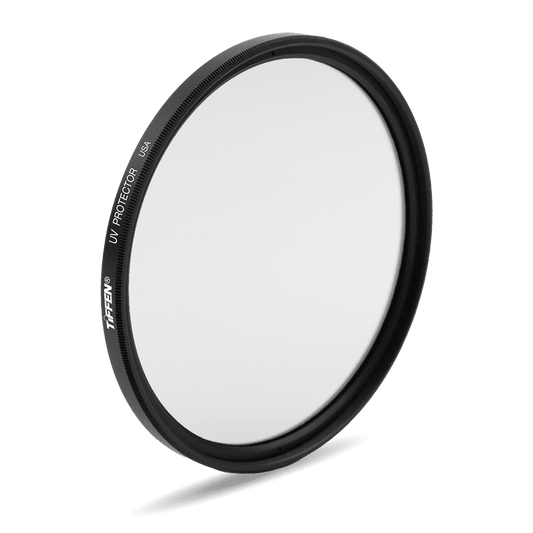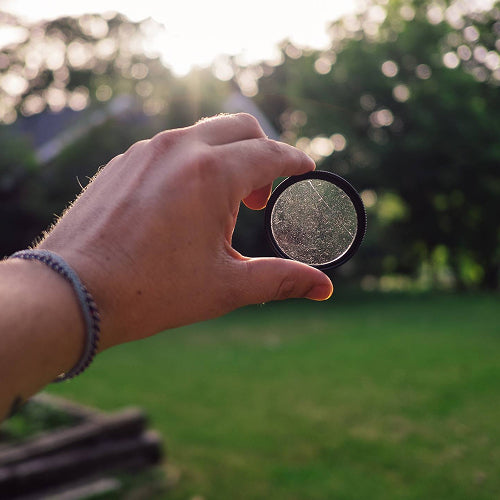The Tiffen Digital Light Control Filter Kit contains three highly useful filters for aiding in greater control over exposure results and the overall appearance of imagery. These filters, a circular polarizer, a 0.6 solid neutral density, and a 0.6 graduated neutral density, are ideally-suited for use with DSLR cameras due to their increased sensitivity to light. Each of these filters can uniquely benefit working in difficult lighting conditions in order to produce well-exposed and balanced imagery.
Each of these filters measures and they are presented in a padded nylon filter pouch for protection while carrying.

